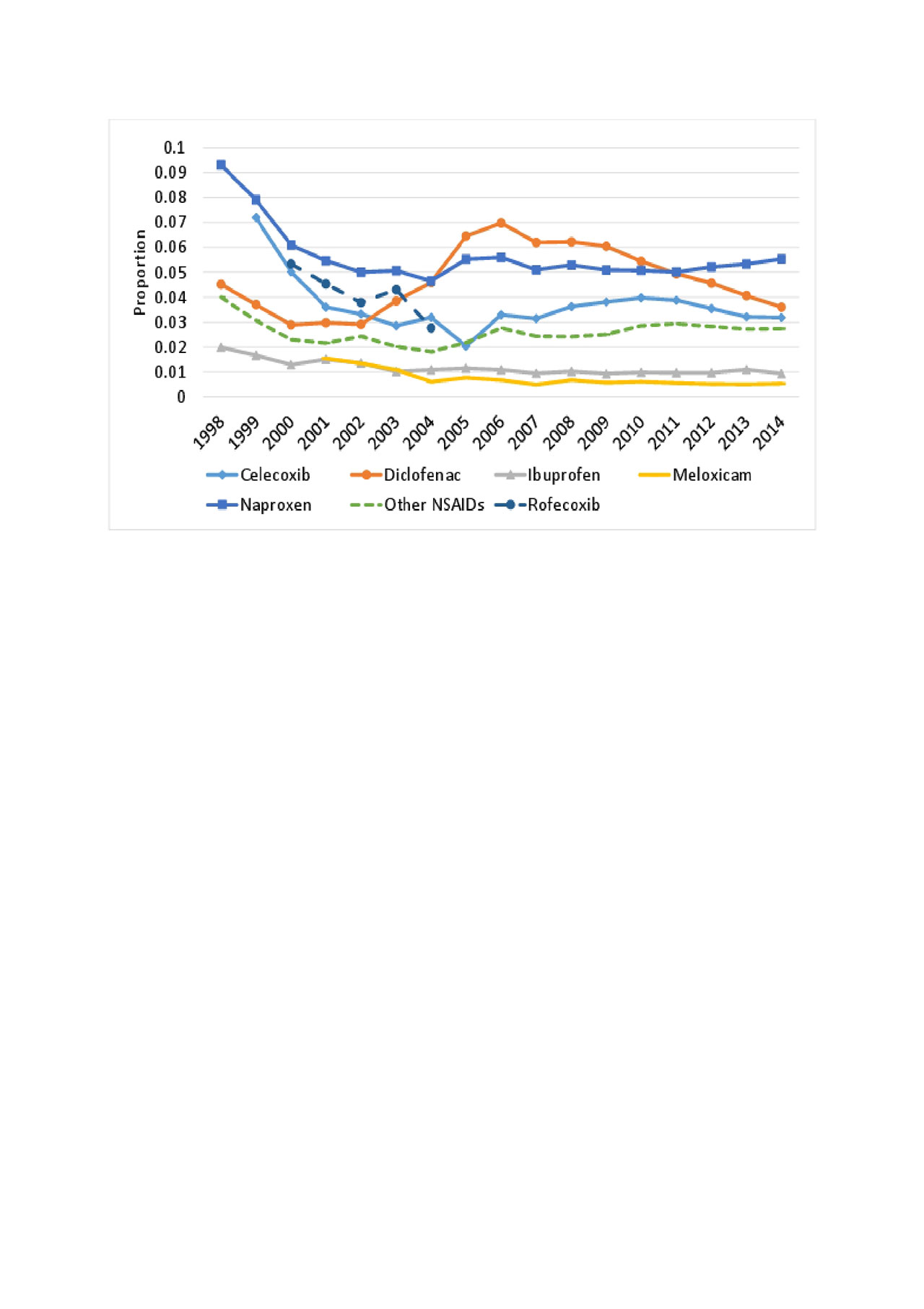Session Information
Session Type: Poster Session (Tuesday)
Session Time: 9:00AM-11:00AM
Background/Purpose: Non-steroidal anti-inflammatory drugs (NSAIDs) and opioids are commonly prescribed for patients with osteoarthritis (OA). However, both types of medication are associated with serious side effects. As a result, guidelines for the treatment of OA have changed substantially over the past 2 decades. Our purpose in this study was to describe the trends in prescribing of NSAIDs (including COX-2 inhibitors) and opioids among patients with OA in the general population.
Methods: We analyzed data from a large, population-based administrative database (PharmaNet) that included all prescriptions for persons aged 50+ processed by pharmacies in the province of British Columbia (BC), Canada, linked to diagnostic codes for visits to physicians and hospitalizations between 1990 and 2014. We identified all incident cases of OA, defined as at least 2 codes within 2 years, with a run-in period of 7 years. We identified all new prescriptions (no prescription in 6 months prior to diagnosis) for each NSAID and opioid available in BC and calculated the proportion of people starting NSAID or opioid medication. We performed similar analyses for prevalent (any) prescriptions among all prevalent cases of OA.
Results: Between 2000 and 2014, the proportion of new OA patients with an NSAID prescription declined from 19.8% to 16.5%. For most NSAIDs (Figure 1), prescriptions declined from 1998 till 2004 and were relatively stable until 2014, with the exception of diclofenac, which increased substantially from 2002 to 2006 and decreased afterwards. In 2014, the most common NSAID was naproxen (5.5%) followed by diclofenac (3.6%), celecoxib (3.2%), ibuprofen (0.9%) and meloxicam (0.5%). For opioids (Figure 2), the overall trend was relatively flat from 1998 to 2004, peaked in 2008 at 24.0%, and declined slightly thereafter. Codeine was by far the most commonly prescribed opioid throughout the study period, but declined from 20.3% of new OA patients in 1998 to 11.9% in 2014. Tramadol increased steadily from its introduction in 2005 and has been the second most common opioid since 2008, reaching 5.3% in 2014. Prescriptions for oxycodone started to decline around 2009 and reached 2.1% in 2014, whereas those for hydromorphone steadily increased to 2.6%. Other opioids were rarely prescribed in patients with OA. The results of prevalence analyses were essentially similar.
Conclusion: There have been important changes in the pattern of prescribing analgesics in BC during the study period. Declines in NSAIDs may have been compensated by increased prescriptions for opioids. This is likely to change as new guidelines discourage the long-term use of opioids as a consequence of the opioid crisis.
To cite this abstract in AMA style:
Kopec J, Cibere J, Lu N, Xie H, Avina-Zubieta J, Esdaile J. Trends in Prescribing of NSAIDs and Opioids Among Osteoarthritis Patients in British Columbia, Canada, 1998-2014 [abstract]. Arthritis Rheumatol. 2019; 71 (suppl 10). https://acrabstracts.org/abstract/trends-in-prescribing-of-nsaids-and-opioids-among-osteoarthritis-patients-in-british-columbia-canada-1998-2014/. Accessed .« Back to 2019 ACR/ARP Annual Meeting
ACR Meeting Abstracts - https://acrabstracts.org/abstract/trends-in-prescribing-of-nsaids-and-opioids-among-osteoarthritis-patients-in-british-columbia-canada-1998-2014/


